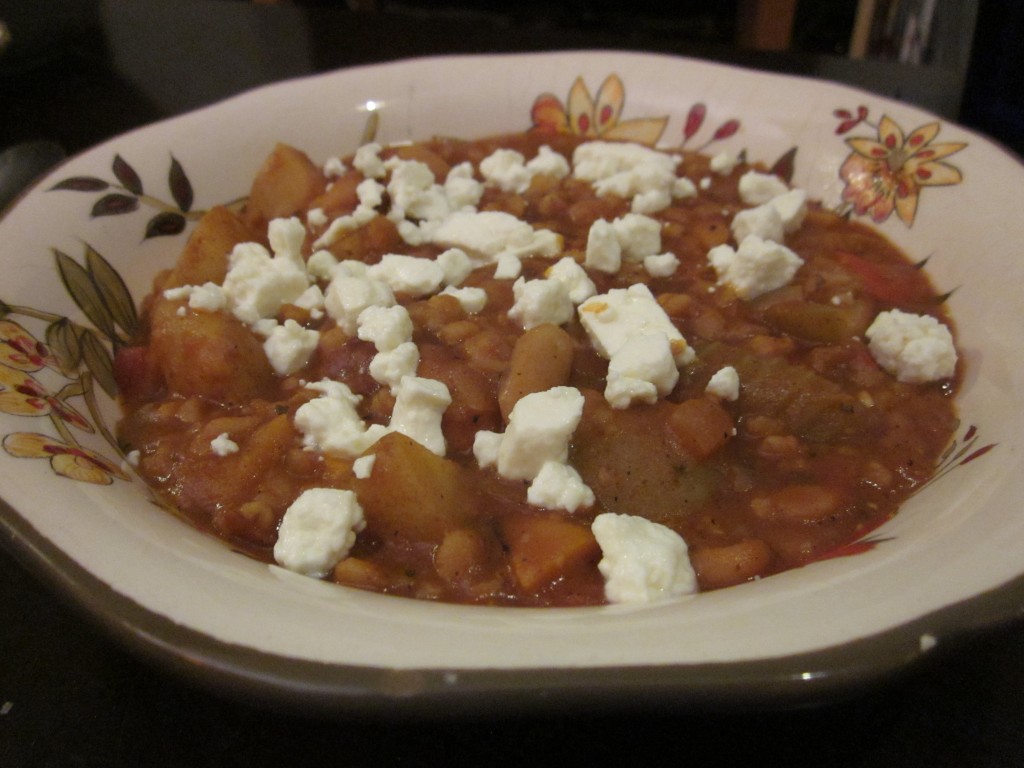Culture
The Hipster’s Cookbook: The History of Chili

Every week in The Hipster’s Cookbook, Meghan Bongartz teaches you how to make great food for not a lot of money.
Everyone around me is talking about football, so I think it’s time to start talking about chili recipes, since I’m fairly certain that this is what people eat while they watch the Super Bowl. I myself have never watched more than five consecutive minutes of a football game, live or televised, including the Super Bowl (which I don’t know the date of and don’t feel like looking up), so I’m not 100% sure, but I like chili so I’m going to go with it. I’ve always thought of chili as a pretty straightforward winter staple. It’s hearty and warming, both because it’s actually warm and because of the spices with which it’s made, and it’s easy to put together. What more could there possibly be to think about?
As it turns out, there are a bunch of weird legends surrounding the history of the dish, because apparently no one has anything better to think about. One of the most confusing ones involves a 17th century Spanish nun, who never physically left Spain but was spiritually transported to the Southwestern United States during extended trances. Word has it that she was the first person to write down a recipe for chili, but of course there are no recorded accounts of it. I don’t understand how this became a myth, because there is no reason why a European nun would go to the effort of taking mind-jaunts to America for the express purpose of telling Native Americans to mix meat and tomatoes and chili peppers. If the commercials aren’t that great during the Super Bowl this year and you feel like you need to entertain people, you can tell them this story, though. Fun fact number two: People in Springfield, IL, spell chili as “chilli” and passed a resolution in the Illinois General Assembly recognizing this as the correct spelling in 1993. To that end, there is a bowling alley called The Chilli Bowl in a town called Chillicothe near where I grew up (obviously south of I-55 in Illinois). So there’s that.
Really, though, it doesn’t matter how you spell it; it matters how you cook it. And there are about a million ways to do that. There are chili recipes calling for every meat you can think of, from ground beef to chicken to venison, as well as vegetarian recipes calling for black or red beans instead. Some limit the vegetables to tomatoes and onions, while others contain things like carrots and zucchini that I’m almost certain were not included in the recipe handed down from the Spanish nun. This is a fairly standard bean chili, with barley added to bulk it up a bit. Per usual, you can substitute vegetable broth for chicken broth if you’d like this to be a vegetarian-friendly dish, but the chicken broth will be richer and you may want to add additional olive oil if you do this.
——
White Bean and Barley Chili
2 tbs olive oil
1 medium yellow onion, sliced
4 cloves garlic, minced or crushed
3 celery stalks, chopped
½ medium bell pepper, chopped
1 28 oz can diced tomatoes (plain or seasoned)
1 cup quick barley
5-8 small golden potatoes, chopped into large pieces with skin still on
6 cups chicken broth
1 tbs chili powder
1 tbs cumin
Salt & pepper to taste
2 tsp oregano
1 15 oz can white kidney beans
Shredded cheese to garnish
1) In the base of a large saucepan or stock pot, heat the olive oil over medium heat. Add the onion, garlic, celery, and bell pepper and sauté until the onion begins to turn translucent.
2) Add tomatoes, barley, potatoes, broth, and seasonings. Increase heat to medium-high, and cook covered for 30 minutes.
3) Stir in kidney beans and continue to cook over medium heat for 10-15 minutes longer, until the potatoes slide easily off a fork when speared. If the mixture has become too thick, add additional water ½ cup at a time until the desired consistency is reached.
4) Sprinkle with shredded cheese to serve.